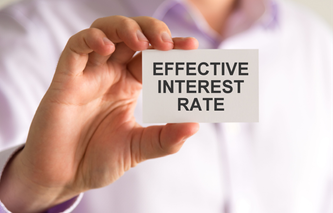Definition
The term annuity due refers to a series of payments, or receipts of money, occurring at consistent intervals of time with an interest charge applied once per interval. With an annuity due, the payment or receipt of money occurs at the beginning of each interval.
Calculation
Present Value of an Annuity Due:
= P x [1 - (1 + i)-N] / i x (1 + i)
Future Value of an Annuity Due:
= P x [(1 + i)N - 1] / i x (1 + i)
Where:
P = payment or receipt of money
N = number of intervals or transactions
i = interest rate
Note: The above formulas are identical to those used when determining the present and future value of an ordinary annuity, with one exception. Since the annuity due transaction occurs at the beginning of each interval, the future value would need to include one additional interval back, while the present value requires one interval forward.
Explanation
For the receipt or payment of money to be considered an annuity, it must possess all three of the following attributes:
The amount of money exchanged in each interval must be the same
The time intervals must be of the same length
Interest charges are applied once per interval
An annuity can be as simple as the periodic deposit of money into a savings account, or as complex as a life annuity, which is an insurance product that is used by retirees to provide for a steady stream of income.
With an annuity due, the payment or receipt of money occurs at the beginning of each time interval. This differs from an ordinary annuity, which requires this transaction to occur at the end of each time interval. For this reason, the number of compounding intervals for an ordinary annuity will be one more than the total number of transactions.
Example
On January 1st, Ann made a resolution that she would start the New Year with an investment of $3,000 into the stock market, and she would do so for the next 30 years. The expected rate of return earned on that money will be 6%. Ann would like to calculate both the expected present value and future value of this investment at the end of 30 years.
Present value of an annuity due:
= $3,000 x [1 - (1 + 0.06)-30] / 0.06 x (1 + 0.06) = $3,000 x [1 - (1.06)-30] /0.06 x (1.06) = $3,000 x [1 - 0.174110] / 0.06 x (1.06) = $3,000 x [0.825890] / 0.06 x (1.06) = $3,000 x 13.7648 x 1.06 = $3,000 x 14.5907, or $43,772.16
Future value of an annuity due:
= $3,000 x [(1.06)30 - 1] / 0.06 x (1 + 0.06) = $3,000 x [5.74349 - 1] / 0.06 x (1.06) = $3,000 x [4.74349] / 0.06 x (1.06) = $3,000 x 79.0582 x 1.06, or $251,405.03


